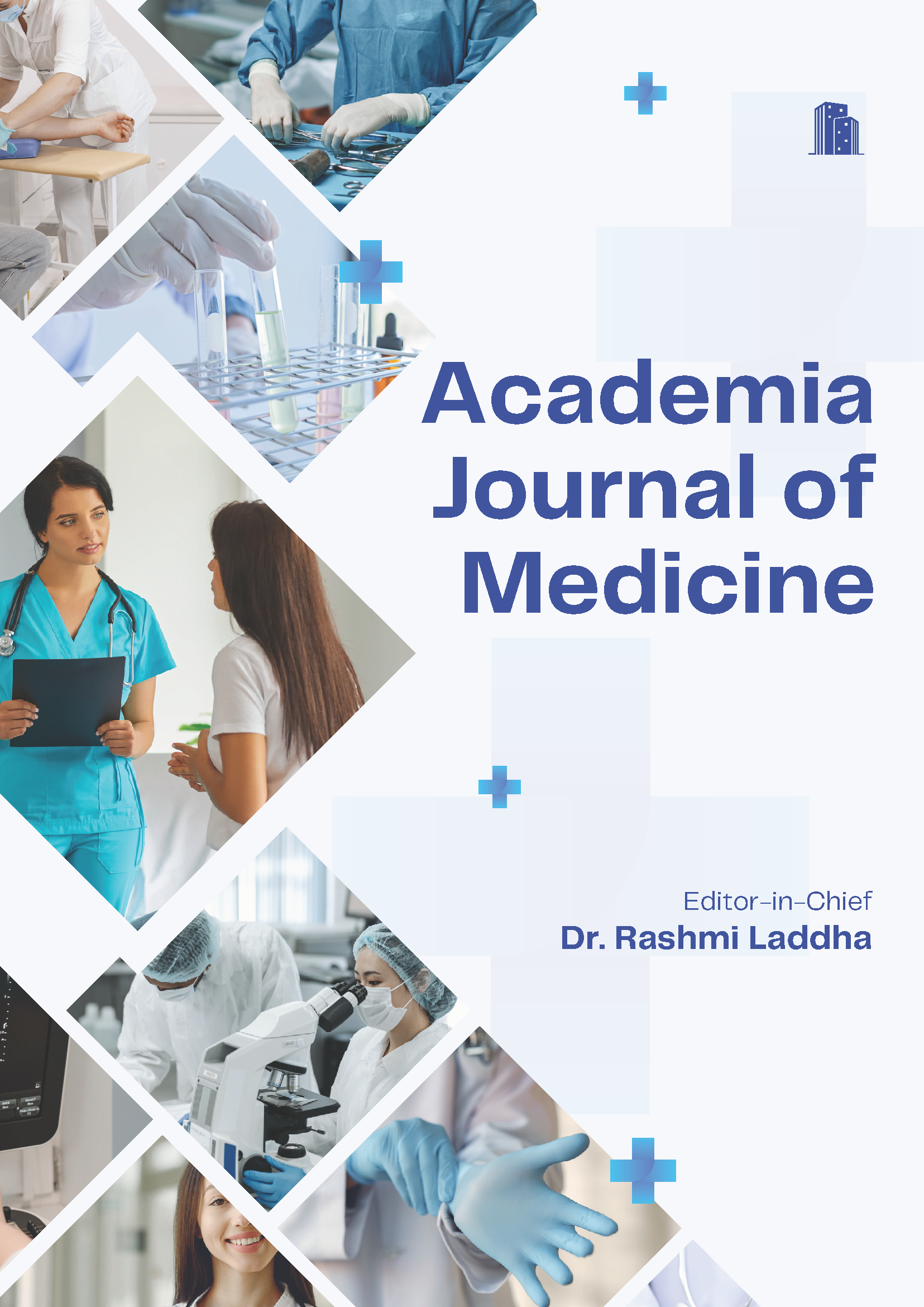Assessment of Awareness and Approach Towards Hypertension Management Among General Practitioners
Keywords:
Awareness, Blood pressure, HypertensionAbstract
Background: Hypertension and its complications are a global concern, due to its high prevalence especially as it often remains undiagnosed. The present study was conducted to assess awareness and approach towards hypertension management among general practitioners. Subjects & Methods: 150 general practitioners were questioned regarding the technique of measurement of blood pressure, diagnosis of prehypertension and hypertension, evaluations of newly diagnosed hypertensive patients, level of blood pressure to start pharmacological treatment and selection of antihypertensive agents in different clinical conditions. Results: Out of 150 subjects, males were 80 and females were 70. Cuff placement covering 2/3 of the arm at heart level was recommended by 84%, preferred position of patient was sitting replied by 52%, supine by 32% and standing and supine by 16%. The number of readings of blood pressure was 1 by 2%, 2 by 40% and 3 by 58%. Investigation preferred by GP was ECG by 91%, urine examination by 68%, serum creatinine by 82%, lipid profile by 80%, ultrasound of abdomen by 35%, serum potassium level by 72% and RBS by 98%. Common symptoms reported were morning headache by 70%, dizziness by 45%, palpitation by 52%, easy fatigability by 57% and impotence by 48%. The difference was significant (P< 0.05). Conclusion: Most of the GPs are well aware and updated about the initial lab investigations, symptoms and techniques.
Downloads
References
1. Kapse CD, Patil BR. Auscultatory and Oscillometric methods of Blood pressure measurement: a Survey. Int J Eng Res Appl. 2013;3(20):528–561.
2. Pickering TG, Hall JE, Appel LJ, Falkner BE, Graves J, Hill MN. Recommendations for blood pressure measurement in humans and experimental animals: part 1: blood pressure measurement in humans: a statement for professionals from the Subcommittee of Professional and Public Education of the American Heart Association Council on High Blood Pressure Research. Circulation. 2005;111(5):697–716. Available from: https://doi.org/10.1161/01.cir.0000154900.76284.f6.
3. Gosse P. Blood pressure should be measured in both arms on the first consultation. J Hypertens. 2002;20(6):1045– 1046. Available from: https://dx.doi.org/10.1097/00004872- 200206000-00004.
4. Hartley RM, Velez R, Morris RW, D’Souza MF, Heller RF. Confirming the diagnosis of mild hypertension. BMJ. 1983;286(6361):287–289. Available from: https://dx.doi.org/ 10.1136/bmj.286.6361.287.
5. Al-Gelben KS, Khan MY, Al-Khaldi YM, Mahfouz A, Abdelmoneim I, Daffalla A. Adherence of primary health care physicians to hypertension management guidelines in the Aseer Region of Saudi Arabia. Saudi J Kidney Dis Tranpl. 2011;22:941–989.
6. Howes F, Nelson EHM. Management of hypertension in general practice: A qualitative needs assessment of Australian GPs. Aust Fam Physician. 2012;41(5):317–340.
7. Levy D, Larson MG, Vasan RS, Kannel WB, Ho KK. The progression from hypertension to congestive heart failure. JAMA. 1996;275(20):1557–1562.
8. Vakili BA, Okin PM, Devereux RB. Prognostic implications of left ventricular hypertrophy. Am Heart J. 2001;141(3):334– 341. Available from: https://dx.doi.org/10.1067/mhj.2001. 113218.
9. Thrift AG, McNeil JJ, Forbes A, Donnan GA. Risk Factors for Cerebral Hemorrhage in the Era of Well-Controlled Hypertension. Stroke. 1996;27(11):2020–2025. Available from: https://dx.doi.org/10.1161/01.str.27.11.2020.
10. yuan Hsu C, McCulloch CE, Darbinian J, Go AS, Iribarren C. Elevated Blood Pressure and Risk of End-stage Renal Disease in Subjects Without Baseline Kidney Disease. Int Arch Med. 2005;165(8):923–923. Available from: https://dx.doi.org/10. 1001/archinte.165.8.923.
11. Mirzaei M, Mirzaei M, Bagheri B, Dehghani A. Awareness, treatment, and control of hypertension and related factors in adult Iranian population. BMC. 2020;20:1–10. Available from: https://doi.org/10.1186/s12889-020-08831-1.
12. Deshpande S, Patel N, Godbole V, Champaneri V, Singh N, Patel R. Awareness and approach towards hypertension man agement among general practitioners of Western Vadodara. J Clin Diagn Res. 2014;8(8):5–8. Available from: https://dx.doi. org/10.7860/JCDR/2014/8509.4741.
